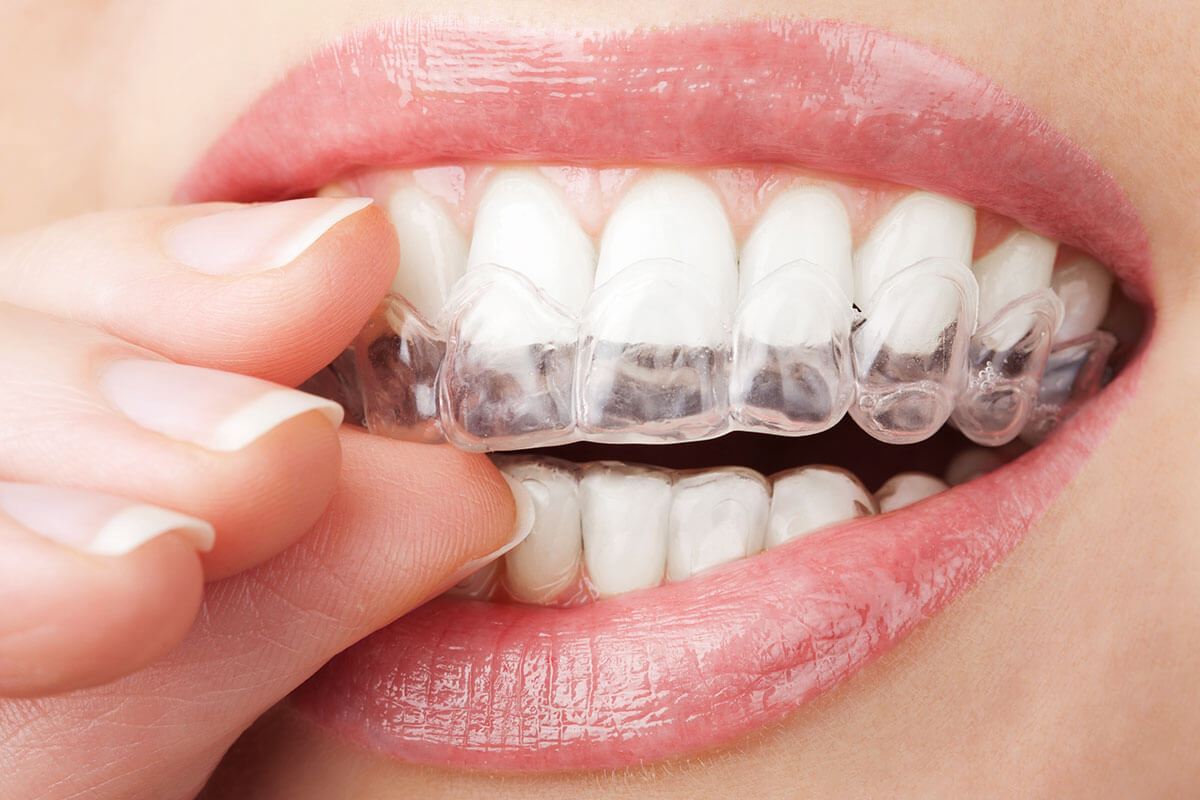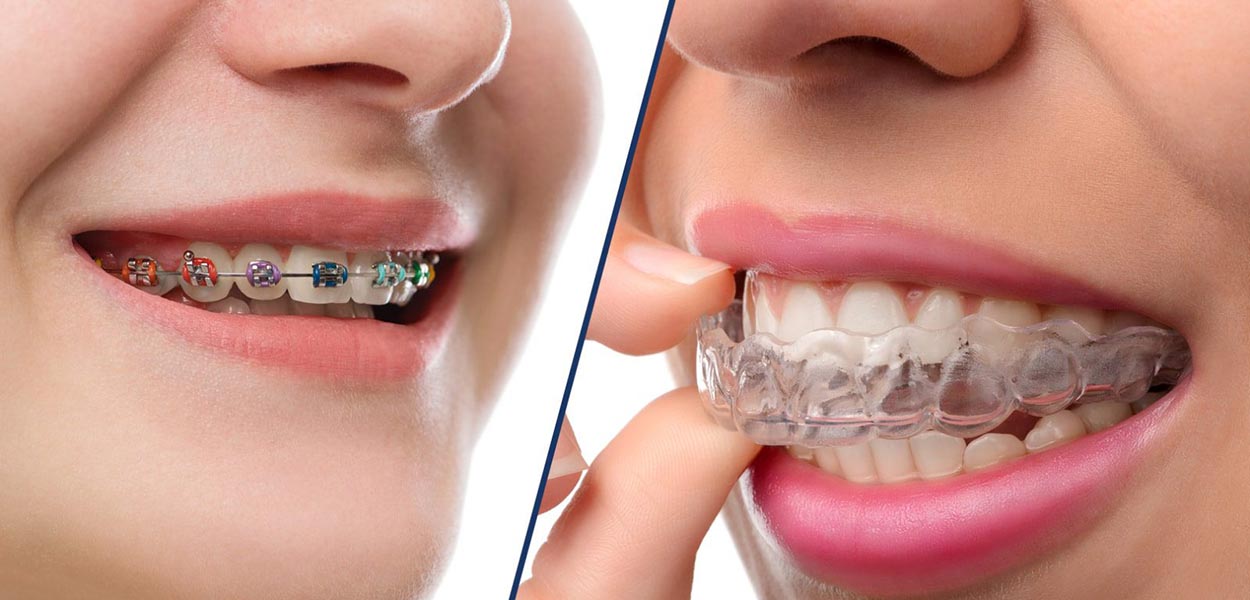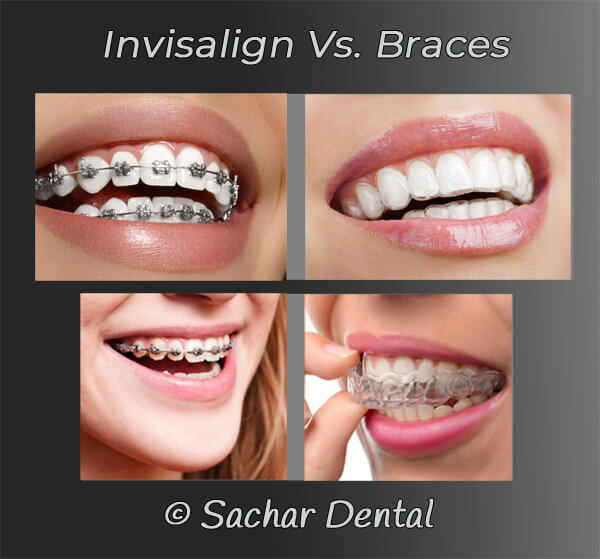What to Anticipate During Your Invisalign Journey: A Comprehensive Overview
What to Anticipate During Your Invisalign Journey: A Comprehensive Overview
Blog Article
Invisalign vs. Conventional Dental braces: Which Alternative Is Right for You?
When considering orthodontic treatment, the choice between Invisalign and traditional dental braces provides a number of important factors that warrant cautious assessment. Invisalign offers a very discreet option with removable aligners, while traditional dental braces supply a more noticeable yet efficient service for severe imbalance.
Summary of Therapy Choices

In contrast, conventional dental braces contain metal braces and wires that are bound to the teeth. This technique uses continuous stress over time to accomplish positioning. While reliable for complex orthodontic problems, standard dental braces require regular sees for changes and can pose difficulties in preserving dental health because of the trouble of cleaning up about braces and wires.
Both options have their values, and the selection often hinges on particular dental conditions, way of life choices, and individual conformity. Inevitably, consulting an orthodontic professional is essential for figuring out the most appropriate treatment plan tailored to individual needs. Understanding the nuances of each alternative can significantly influence the total success of orthodontic treatment.
Visual Factors To Consider
A significant aspect affecting the option between Invisalign and typical braces is the visual charm each treatment uses. Invisalign aligners are crafted from clear plastic, making them practically invisible when put on.
On the other hand, traditional braces contain metal braces and cables, which can be more obvious. While advancements in orthodontic modern technology have brought about the development of smaller sized brackets and colored elastics, standard dental braces still preserve an even more conspicuous account. For some people, the visibility of dental braces may prevent them from looking for required therapy.
Ultimately, the option in between Invisalign and traditional dental braces may hinge on personal preferences relating to looks. People that prioritize discretion usually lean toward Invisalign, while those who are much less worried about exposure might select conventional dental braces. Understanding the visual effects of each option is important for making a notified choice that straightens with one's lifestyle and preferences.
Comfort and Convenience

In regards to comfort, Invisalign aligners are removable, enabling patients to appreciate their preferred foods without restriction and keep ideal oral health. Brushing and flossing are simplified, as the aligners can be next taken out throughout these regimens, whereas standard braces require mindful navigating around cords and brackets.
Additionally, Invisalign's dynamic system enables less orthodontic sees. Clients generally get multiple collections of aligners simultaneously, which can simplify the treatment procedure and decrease time invested in the orthodontist's chair. On the other hand, typical dental braces necessitate routine adjustments, making them much less practical for those with hectic schedules. Invisalign. Overall, the comfort and ease of Invisalign make it an attractive selection for numerous people seeking orthodontic therapy.
Treatment Duration and Performance
While both Invisalign and traditional braces work in dealing with dental misalignments, the period of therapy can differ significantly between both alternatives. Generally, Invisalign treatment can take anywhere from 12 to 18 months, depending upon the intricacy of the instance. The clear aligners function by gradually shifting teeth into their preferred settings, and routine follow-ups with an orthodontist aid make certain progress remains on track.
On the other hand, conventional braces commonly call for a longer commitment, usually ranging from 18 months to three years. This is due to their fixed nature and making use of brackets and wires, which can be much more efficient for serious misalignments and complex cases (Invisalign). The therapy performance of typical dental braces is well-documented, as they enable for exact modifications and higher control over tooth movement
Ultimately, the choice in between Invisalign and typical dental braces might rest on both check that the expected treatment period and the details oral problems available. Consulting with an orthodontist is vital, as they can supply tailored recommendations based on individual requirements, making sure the selected method straightens with preferred durations and outcomes.
Price Contrast and Insurance Coverage Options
Price plays a considerable role in the decision-making procedure for individuals taking into consideration orthodontic therapy, whether choosing Invisalign or conventional dental braces. On average, the price of Invisalign varieties from $3,000 to $8,000, while traditional dental braces generally cost in between $2,000 and $6,000. Variables affecting these prices consist of the complexity of the situation, the duration of therapy, and geographical location.
Several dental insurance coverage strategies give partial coverage for orthodontic treatments, however the specifics can vary widely. Typically, standard dental braces might be more regularly covered by insurance plans compared to Invisalign, which some insurers classify as an aesthetic treatment.
Additionally, several orthodontic methods use flexible settlement plans, making both treatment options much more easily accessible. Individuals need to ask about possible financing alternatives and price cuts for in advance repayments. Examining the overall expense, consisting of insurance policy advantages and layaway plan, is important for making an informed decision that aligns with both visual choices and budget plan considerations.

Final Thought
In recap, the selection between Invisalign and conventional braces depends upon numerous aspects, consisting of aesthetic preferences, comfort, therapy period, and expense. Invisalign provides a discreet, detachable alternative that promotes dental hygiene and dietary adaptability, while conventional dental braces might be preferable for complex oral concerns and usually come with a lower rate factor. Eventually, consultation with an orthodontist is important to analyze specific situations and determine one of the most proper treatment alternative for accomplishing optimal oral positioning.
When considering orthodontic treatment, the option in between Invisalign and conventional braces presents numerous important elements that warrant careful evaluation.Contrasting Invisalign and traditional dental braces reveals distinctive treatment alternatives for orthodontic modification.While both Invisalign and traditional braces are efficient in dealing with dental imbalances, the period of treatment can vary considerably in between the two choices.Cost plays a considerable role in the decision-making process for people considering orthodontic treatment, whether deciding for Invisalign or typical dental braces.In summary, the option between Invisalign and typical dental braces hinges on several elements, including visual preferences, convenience, therapy duration, and price.
Report this page